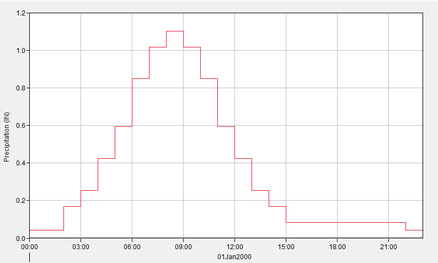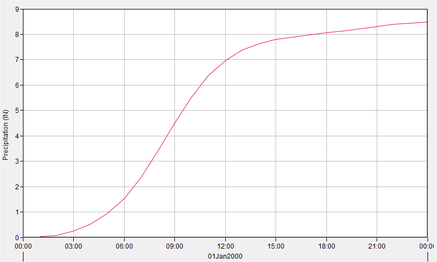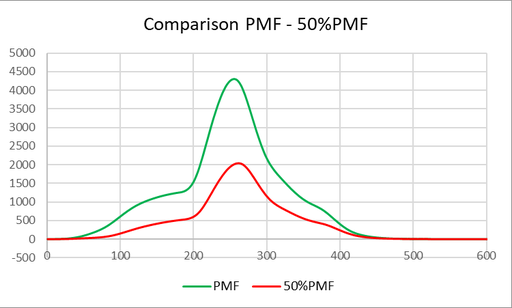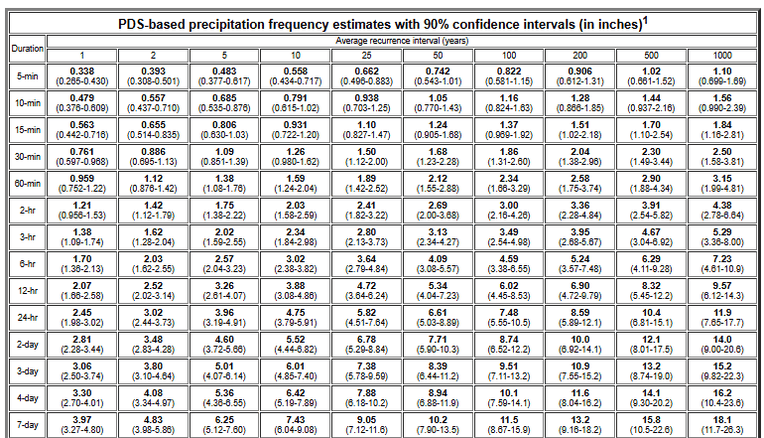PMF - Probable Maximum Flood
The Probable Maximum Flood (PMF) is defined as the largest flood that is considered reasonably possible to occur at a specific location, based on the most severe combination of meteorological and hydrologic conditions. It represents an extremely rare but physically possible flood event, and is commonly used for dam safety analyses and critical infrastructure design, especially when failure would have significant consequences.
The PMF is derived from the Probable Maximum Precipitation (PMP), which is the greatest depth of precipitation for a given duration that is meteorologically possible for a specific region and time of year. PMP values are calculated using historical storm data, atmospheric conditions, and expert judgment, often provided by national agencies like the NOAA in the United States.
In hydrologic modeling, the PMP is used as input rainfall in a watershed model (e.g., in HEC-HMS) to generate runoff. The resulting hydrograph—which includes peak discharge and volume—is what defines the PMF.
How the PMP is derived
The Probable Maximum Precipitation (PMP) is a theoretical estimate of the maximum amount of precipitation that is physically possible over a specific location and duration, under the most severe meteorological conditions. It is expressed in depth units, typically inches or millimeters, and distributed over time (e.g., 6-hour or 24-hour durations).
PMP data can be obtained from various sources, including:
-
NOAA technical reports (e.g., Hydrometeorological Reports or Atlas 14),
-
The NOAA Precipitation Frequency Data Server (PFDS),
-
Specialized tools and geoprocessing workflows, such as an ArcGIS PMP Estimation Toolbox that calculates PMP depth over a defined watershed area and duration.
Once the PMP values are defined for a given time interval, they can be converted into a hyetograph (rainfall intensity over time), and entered into HEC-HMS as a Time-Series Precipitation input. Typically, this data is either:
-
Incremental (in/hr) – for rainfall intensity over each time step, or
-
Cumulative (in) – for total rainfall depth over time.
This precipitation input is then linked to a Meteorologic Model in HEC-HMS, which governs the rainfall-runoff process.
In the images below you can see the difference between the incremental inches (left) and the cumulative inches (right).


How the PMF is derived
The Probable Maximum Flood (PMF) is the resulting hydrograph (discharge vs. time) generated by simulating the PMP over the hydrologic model of the watershed with HEC-RAS. The PMF is expressed in terms of discharge (typically in cubic feet per second – cfs or cubic meters per second – m³/s) and represents the maximum potential flood response of the catchment to the most extreme precipitation input.

| Aspect | PMP (Probable Maximum Precipitation) | PMF |
|---|---|---|
| Source of data | NOAA Atlas 14, HMR reports, ArcGIS PMP toolboxes | Derived from HEC-HMS simulation using PMP input |
| Definition | Theoretical maximum precipitation for a location and duration | Theoretical maximum flood resulting from PMP over the watershed |
| Units of Measure | Inches or millimeters (precipitation depth over time) | Cubic feet per second (cfs) or cubic meters per second (m³/s) |
| Data Format | Time series of cumulative or incremental rainfall | Time series hydrograph (discharge vs. time) |
| Used in | Input to Meteorologic Model in HEC-HMS | Output from Basin Model simulation in HEC-HMS |
| Purpose | To simulate the most extreme plausible rainfall event | To estimate the worst-case flood scenario for dam safety or design |
| Spatatial Distribution | Can be uniform or spatially variable depending on method used | Depends on watershed characteristics and model configuration |
| Temporal Distribution | Typically 6-hour or 24-hour hyetograph patterns | Hydrograph over time, often with peak discharge and volume metrics |
| Example Tool or Entry Point | HEC-HMS: Time-Series Data → Precipitation Gage | HEC-RAS: Boundary Conditions → Flow Hydrograph |
50% PMF
The term "50% PMF" refers to a hypothetical flood event that is half the magnitude of the full Probable Maximum Flood (PMF). It is not a formally defined hydrologic standard, but it is often used in dam safety studies or risk assessments to simulate less extreme, yet still severe flood scenarios.
How is it derived?
-
The 50% PMF is typically computed by reducing the PMP (Probable Maximum Precipitation) input by 50%, not by directly halving the PMF hydrograph itself.
-
A new meteorologic model is created in HEC-HMS, using 50% of the PMP rainfall depths as the time-series input.
-
The reduced rainfall is applied to the same basin model to compute the resulting outflow — this becomes the 50% PMF hydrograph.
🔹 Why use 50% PMF?
-
It allows engineers and decision-makers to assess intermediate risk levels, between design floods like the 100-year event and the full PMF.
-
It’s useful for understanding how partial PMP events could still cause significant flooding or dam-related impacts.
Appearance:
-
The shape of the hydrograph is generally similar to the PMF, but with lower peak flow and volume.
🔹 Where it is used:
-
PMP (reduced by 50%) is inserted into HEC-HMS as a precipitation gage time-series.
-
The resulting hydrograph is then used in HEC-RAS for dam breach or downstream impact analysis, just like the full PMF.

1% AEP
The 1% Annual Exceedance Probability (AEP) event (also known as the 100-year flood) is a statistical flood event that has a 1% chance of being equaled or exceeded in any given year. It is a regulatory benchmark commonly used in floodplain mapping, infrastructure design, and dam safety studies.
In this website: PF Map: Contiguous US you can select the area of interest and obtain the %AEP that you desire.
1%AEP = 100 years; ---------------0,5%AEP = 200 years --------------- 0,2%AEP = 500 years.

Aggiungi commento
Commenti